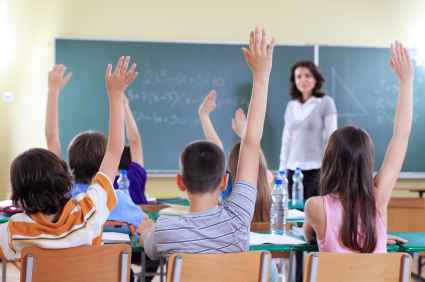“Since students don’t
learn the same way, we need to teach them the way they learn”, it means that teaching involves teachers to use and apply different strategies to
make each of the students learn, even when all of them are different, and
obviously they learn in different ways. Differentiated instruction provides
teachers with the appropriate tools to structure lessons to satisfice their
students learning needs.
We can differentiate our lesson plans in this way:
Learning by Pace
This involves the time
on task that best accommodates learners. While some learners need a good deal
of time to complete an assignment, others may require less time, or a small
extension of time, in order to address the material presented. Teachers must be
creative and apply different techniques with all of the students for them to do
a good job and to enjoy the class.
Learning by Ability Level
This is about the general or promethium
expectation of students’ performance, competency and skills according to their
age or grade. Achievement
level may vary from one discipline to another, so that grade or age level is
acceptable, but content adeptness within a subject area may differ. Determining
differences in ability levels is often facilitated through scores on
standardized tests. These serve as the determining factor for what is
considered “on level” and what is above or below it.
Learners’ Interests
Students are interested
and concerned about many things, and finding out what those things are is a
good tool for teachers who want to use different and interesting strategies for
teaching. Students’ interest refers to the areas where they are focused due to
intentness, concern, curiosity, importance, consequence, and variations of thinking
or feeling regarding learning fields. Interest are emotionally or cognitive
based, they may involve previous experiences and knowledge about certain areas.
Learners’ Needs
The
needs of a learner represent the gap between what the learner wants to get out
of the learning experience
and his or her current state of knowledge, skill, and enthusiasm. Student needs vary as
much as individuals themselves at any given time. Emotional components,
assessment tools, achievement in one area and not in another, students’ sense
of security, and stress factors are all considered when determining learners’
needs.
Learning Styles
This is attention to
the way individuals process and retain information. It means the way in which
students learn. Learning
styles group common ways that people learn. Everyone has a mix of learning
styles. Some people may find that they have a dominant style of learning, with
far less use of the other styles. Others may find that they use different
styles in different circumstances.
Tier Lessons
These are lessons in
which the assignment begins at a basic level and builds in complexity. The
instruction is designed to add layers for greater cognitive skill application
and comprehension. Tier lessons and/or scaffolding are implemented like the
rungs of a ladder, moving from lower to higher levels of understanding.



.jpg)




.jpg)
.jpg)

.jpg)






.jpg)








.jpg)



.jpg)



